What do you do when you absolutely love spending time by the water, but fishing has lost all it’s appeal and you want to try something completely new? You could always give spearfishing a shot! This fun sport combines the relaxation one gets when swimming with the thrill of the hunt.
In this guide, you’re going to learn the basics of spearfishing so you have a better understanding of why spearfishing is so much better than plain old fishing of the dock or a boat.
What Is Spearfishing?
Spearfishing is sport that can include a variety of disciplines and techniques, but for general reference, it is a sport where you are using some kind of spear gun under the water to catch fish. You can do this with the help of scuba gear, or you could go freediving.
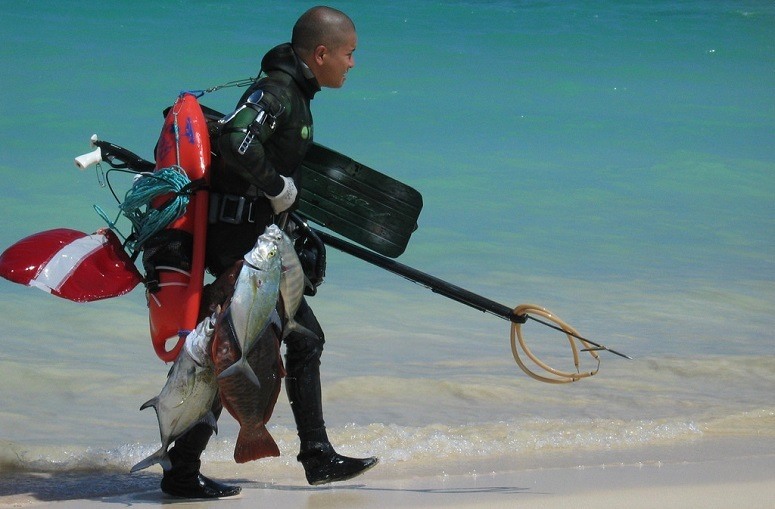
The gear you’ll need when you go spearfishing will vary depending on what kind of fish you’ll be fishing for, but also where you’re going to fish because not all aquatic ecosystems are the same.
The most common fish people go after when spearfishing include:
It’s important to note that you must have a spearfishing license specific to where you intend on going spearfishing because states have different licensing and permit requirements.
With that said, you can go spearfishing alone or as a member of a group. We do recommend that you have someone with you if you’re a beginner because you never know what could go wrong.
History Of Spearfishing
Spearfishing is one of the oldest ways humans have gone about catching fish. Early civilizations would use a long stick with a sharpened point to catch fish. During the Paleolithic era, people would use harpoons, which were just barbed poles to catch more than just fish.
There have been discoveries made in Cosquer cave located in the south of France that show seals that look like they’ve been harpooned. What’s truly astonishing is that these images have been preserved for more than 16,000 years, so saying that spearfishing is an old activity, it’s really an understatement!
What’s more interesting is that over the years, the simple spears that ancient civilizations used has morphed into different types of spears. Before people would dive deep into the ocean to spearfish, people would stick to fishing in shallow waters. However, with the creation of the speargun, people began fishing in deeper waters.
Types Of Spearfishing
Over time, as spearfishing evolved and the equipment used to spearfish got better, people began spearfishing differently. They would either practice:
Shore Diving
Shore diving is the most common way people spearfish because all it involves is going to the beach or a shoreline, going in the water and maneuvering around things like rocks, coral, kelp and sand to find their target. Usually when spearfishing off the shore, divers will go between 5 to 25 meters deep.
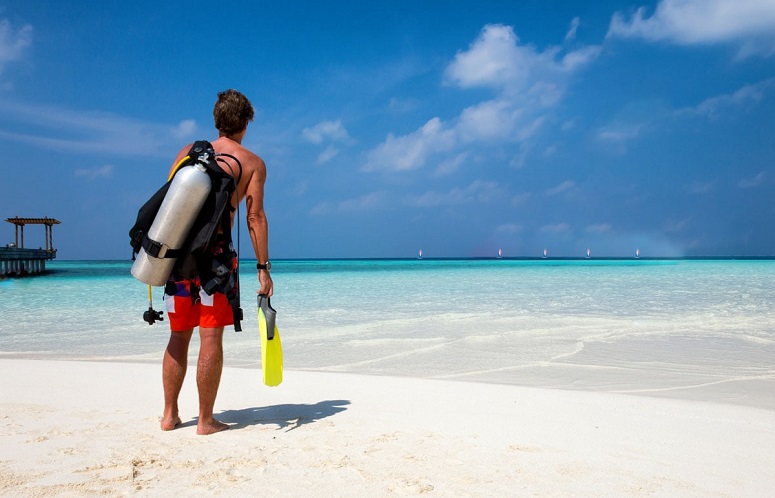
When shore diving, you’ll have the chance to hunt a variety of fish, but most of the time you’ll come back with rock or kelp fish. However, you can also catch ocean game fish with shore diving. For this type of spearfishing, divers will usually use a pole spear or a speargun.
Boat Diving
Boat diving includes boats of all sizes, ships, and even spearfishing kayaks or canoes. The diver will use these boats to go to areas off shore reefs, islands, or even man-made nautical structures like Fish Aggregating Devices (or Fads). Divers may also use a boat to go somewhere that is closer to the shore but cannot be reached by land.
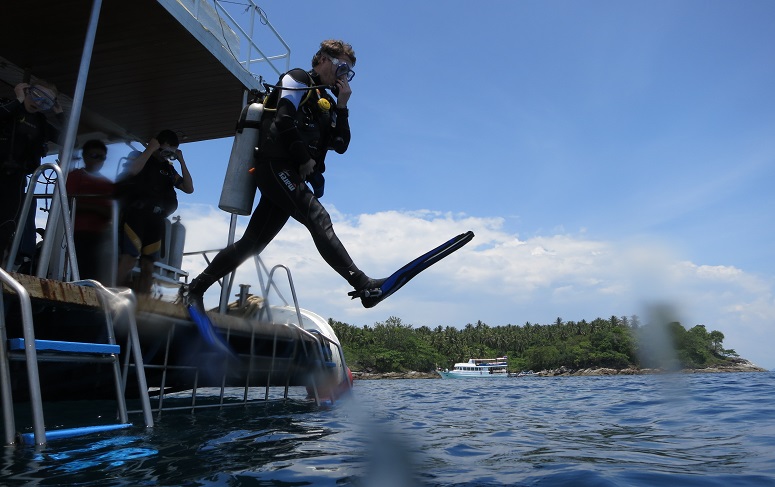
The techniques and gear used for boat diving is similar to shore diving, except the tools you use will depend on what you’re trying to catch. It’s important that if you are going to use a speargun with boat diving that you’re mindful of your surroundings and never keep the speargun loaded on the boat.
Blue Water Hunting
Blue water hunting is gaining traction among experienced spear fishermen be its different and exciting. When you’re in the deep blue, you’re going to be accessing clear, deep water and you’ll be trolling or chumming for game fish. These game fish include:
Blue water hunters will get to the dive spot via boat and the boat driver will leave the divers to drift in the current for quite a few kilometers before they pick them back up.

Since these blue water hunters are left in the water for several hours without seeing any fish and just drifting, the diver could experience sensory deprivation, which could cause them to misjudge a solitary fish and that could be dangerous.
The tools blue water hunters use include breakaway rigs and a large multi-band wooden gun. Sometimes when going after larger fish that need to be subdued, the hunter will use a second band gun to make the killing shot.
Spearfishing Gear
When you’re going spearfishing, you’re going to have a spear (obviously), but you can also use other pieces of equipment to make the most out of your experience. Spearfishing gear for beginners can vary a bit from gear used by more experienced spearos but the most important items remain the same. Some gear that a spearfisherman may carry can include:
Speargun
A speargun is going to shoot a spear directly at the object you’re aiming for, and it is a tool that many prefer because it is quick and easy. There are two types of spearguns that a fisherman could choose between: a banded gun or an air gun.
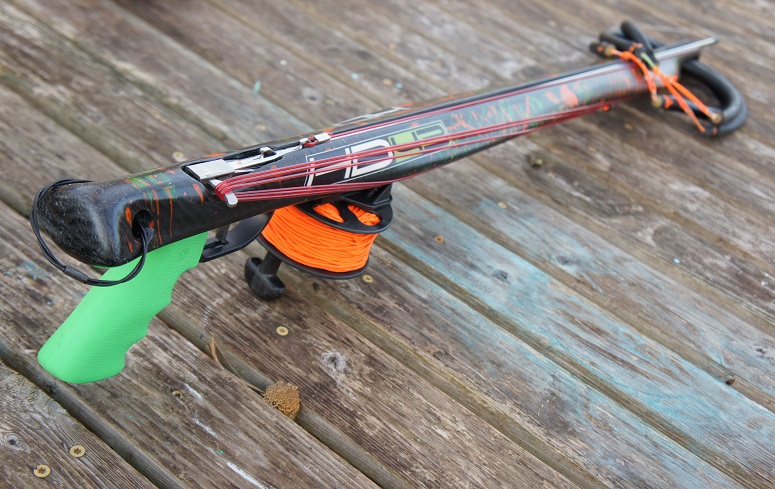
Both tools are effective, but many prefer the banded gun because you don’t have to worry about anything other than the band.
Pole Spears
A pole spear (sometimes incorrectly referred to as a harpoon) is what most people think of when you tell them you’re going spearfishing.
A Harpoon is traditionally used from land or a boat to spear fish and even sea mammals with and if everything goes according to plan it's really a type non-diving spearfishing - which is not the focus of Apnealogy.
The polespears that we are most interested in are used in the water by divers and freedivers. These tools have been used throughout history and they are still used today among those who enjoy targeting species like lion fish and those who like to go back to basics.
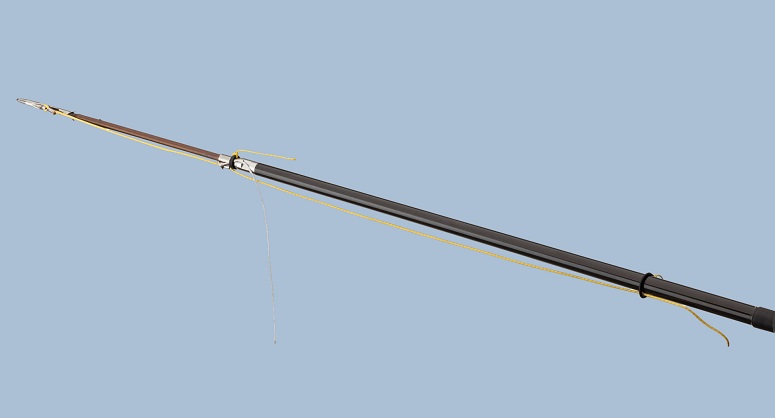
Wetsuit
Your spearfishing wetsuit is going to be an important item to have because it is what will help you stay comfortable when swimming in cold water. With that said, even if you’re swimming in warm water, you’ll want some kind of wetsuit to protect you from the sun, marine life, and hazards that you encounter.
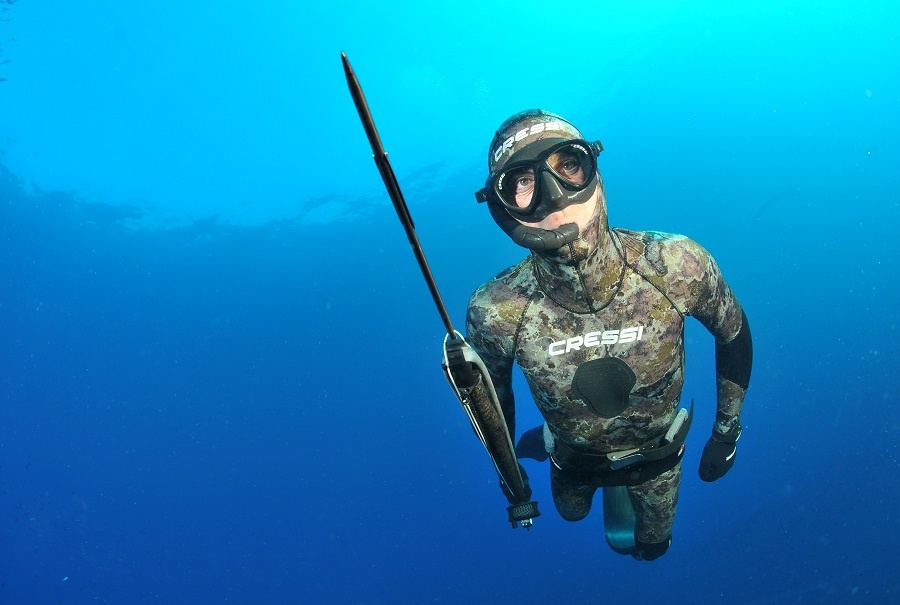
Fins
The freediving fins you choose will determine how far down you’ll be able to dive, but it will also determine how much energy you have to use to swim. When you’re looking for a good set of fins, you’ll have to choose between plastic, fiberglass, or carbon fiber fins.
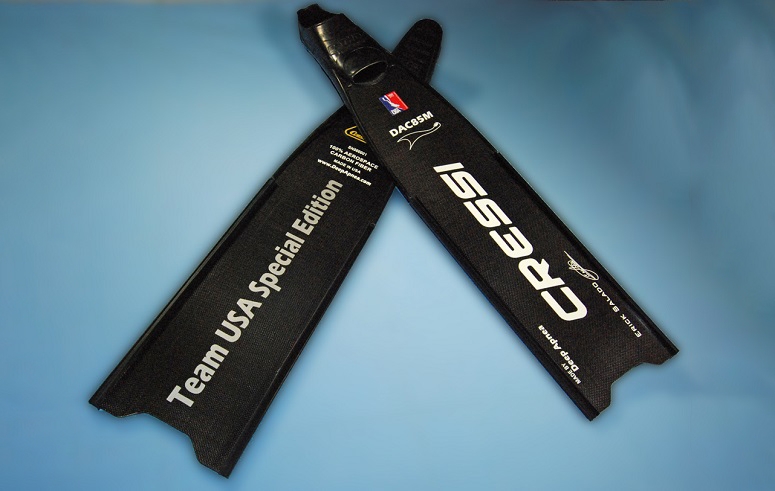
Most beginners will opt for good quality plastic fins, but if you want to get the best money can buy, carbon fiber fins are going to give you the most comfort out of the three, but also reduce the amount of energy you need to use to swim with them.
Snorkel And Mask
When you’re looking for a good mask to use spearfishing, you’ll want a mask with a low profile because less air will be trapped between the mask and your face, therefore reducing how much pressure you have to contend with when equalizing underwater.

You’ll also want a mask with a clear lens that offers a wide range of visibility. If you’re going to be diving in water with low-visibility, we recommend using colored lenses because they’re designed to help you see better under the water. As for the snorkel, we recommend any J-shaped snorkel that has a comfortable mouth piece.
Other Accessories
Other accessories you may want to consider include:
Spearfishing Dangers
Although spearfishing can be a lot of fun, it isn’t without its risks. In fact, spearfishing is really dangerous if you’re not careful. Here’s a look at common dangers that spearfishermen face when going spearfishing.
Entering And Exiting The Water
One would think that getting in and out of the water is probably the safest part of spearfishing, right? That isn’t necessarily the case because if you aren’t aware of your surroundings, you could put yourself in danger.
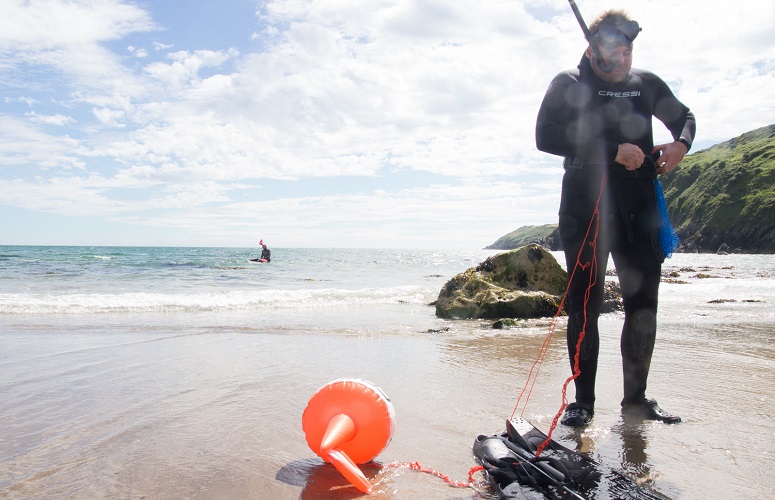
A good rule of thumb is if the swell is too large, save your dive for another. When you’re tired, you’re not going to be able to fight a high surf. That surf could bounce you around against rocks, it could cause you to accidentally hurt yourself or someone else with your speargun, or you could even get a cramp and drown.
Rip Currents
Rip currents can sweep you up and push you out into the ocean before you even realize what’s happening. It’s a good idea to talk with experienced divers to learn about diving in your area. They’ll be able to tell you where the currents are and what kind of conditions causes the currents to form.
When there is a strong surge, you should always be aware of the direction you’re in, any obstacles in the water, and even if there are overhangs. When you’re in deep water, that surge can pull you more than 50 feet in a matter of seconds.
Permanent Ear Damage
When you’re diving, it’s important to equalize the pressure in your ears, otherwise you could suffer permanent hearing loss and even vertigo. If you’re diving and you start to feel pain in your ears, you should stop your descent and resurface.
You’ll want to wait again in a few minutes before trying it again. If the pain doesn’t go away or you feel pain when you go back under, you could pack it up and try again another day or fish in shallow water.
Drowning
Drowning is a risk everyone faces when they go in the water. As a spearfisherman, you could get tangled in kelp, experience shallow water blackouts, get hit by a boat or hit a rock. That’s why many people insist on going spearfishing in a group or at least with a buddy so that people can keep a watchful eye on you.

Sharks
Sharks don’t necessarily see you as a tasty snack, but when you’re swimming around a bunch of chum or have a stringer with a bloody fish at the end, sure sharks are going to be curious. If you encounter a shark, you should get out of the water as soon as possible and string up your fish.
Spearfishing Legality
The laws of spearfishing is going to vary greatly from place to place. In many places, spearfishing is illegal, but there are some places where you can participate in the sport only during certain times of the year.
Spearfishing In The US
Spearfishing in the United States is going to depend on the state you’d like to fish. Not only do you have to concern yourself the state laws, but there are also laws and regulations put into place by the local government.
We recommend that before you do go on your spearfishing adventure, you familiarize yourself with the spearfishing laws in the area you’d like to go fishing in.
Spearfishing In Saltwater
If you want to go spearfishing in saltwater, most places require you to have a saltwater license. Not only do you need a license, but some places will indicate how far out you can go. For example, Florida considers their state waters to be “all state waters surrounding the Florida Keys out to 3 (three) nautical miles from the nearest point of land…”
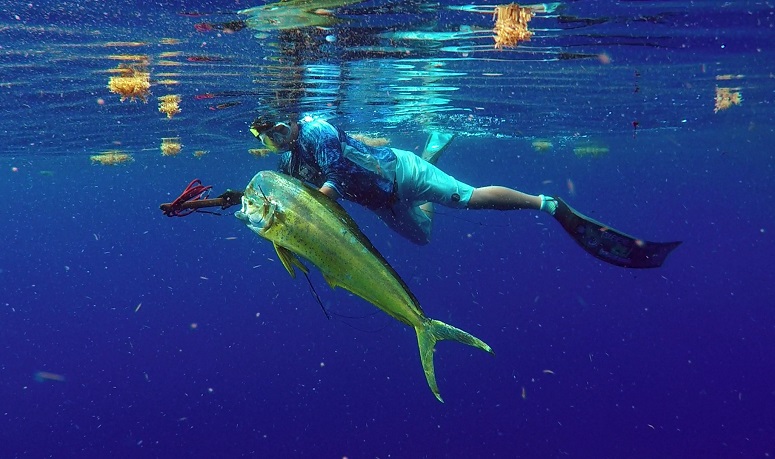
Scuba Spearfishing
When you want to go spearfishing, you cannot use scuba equipment. Why, you ask? By wearing an oxygen tank, you’re giving yourself an unfair advantage over the fish because you’re able to stay under water and hunt for the biggest target, but also hunt for a specific type of fish.
Usually, these biggest and best fish are in their prime and are sexually mature. So, when you’re hunting these bad boys, you’re reducing the population, but you’re also reducing the rate of repopulation since captured fish can’t repopulate in their natural habitat.
Final Thoughts
Skewering a fish with a spear (or a spear-like device) is one of the oldest ways the human species caught fish. People all over the world practice spearfishing, both as a recreational activity, but it is also done commercially as well.
When you want to try your hand at spearfishing, you have a few different methods you could try: shore diving, boat diving, and blue water hunting. If you’re not keen on the idea of hunting underwater, you also have the option of non-diving spearfishing where you stand on the shore and jab your spear at fish as they swim by.
To go spearfishing, you don’t need a lot of equipment like you would need with other forms of fishing. All you really need is a spear, but a lot of people will have other pieces of equipment like a mask, snorkel, a speargun and more. It’s all about personal preference and what you need (or want) to make your spearfishing experience more enjoyable and successful.
If you need help choosing a good beginners speargun, why not head over to our buying guide where we provide you with a few mini-reviews of spearguns we think are excellent options for novice and experienced spearfishermen alike. You can check that out here!
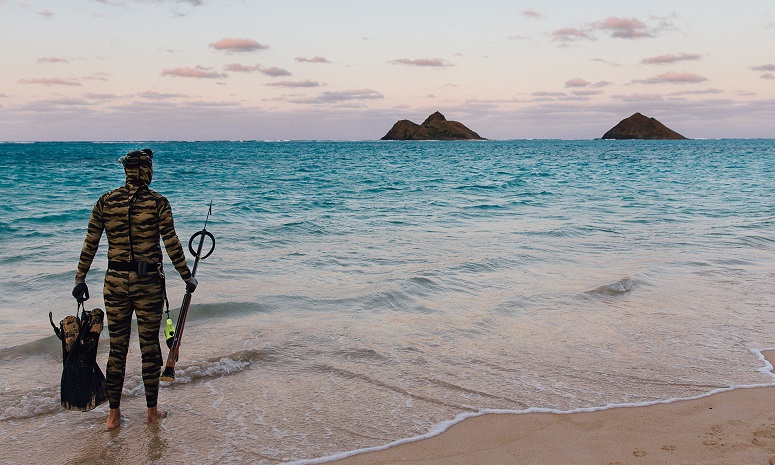
Unfortunately, where you decide to go spearfishing is limited because it isn’t legal everywhere. Not only do you have to worry about where you can spearfish, you also have to pay attention to what kind of fish you can hunt, as well as what equipment you can and cannot use.
Spearfishing is a great sport for people who enjoys being in the water and fishing. In many ways, spearfishing is the perfect combination of these two activities.
You’ll find that with a little bit of practice, patience, and willingness to get in the water and hunt, spearfishing is a lot of fun when you follow safety guidelines and never go out in the water by yourself because accidents are always unpredictable.
Leave us a comment below and tell us which you’d prefer to use: a quick and easy speargun or take the hands-on approach with a pointed spear. We’d love to hear from you.
Resources:


